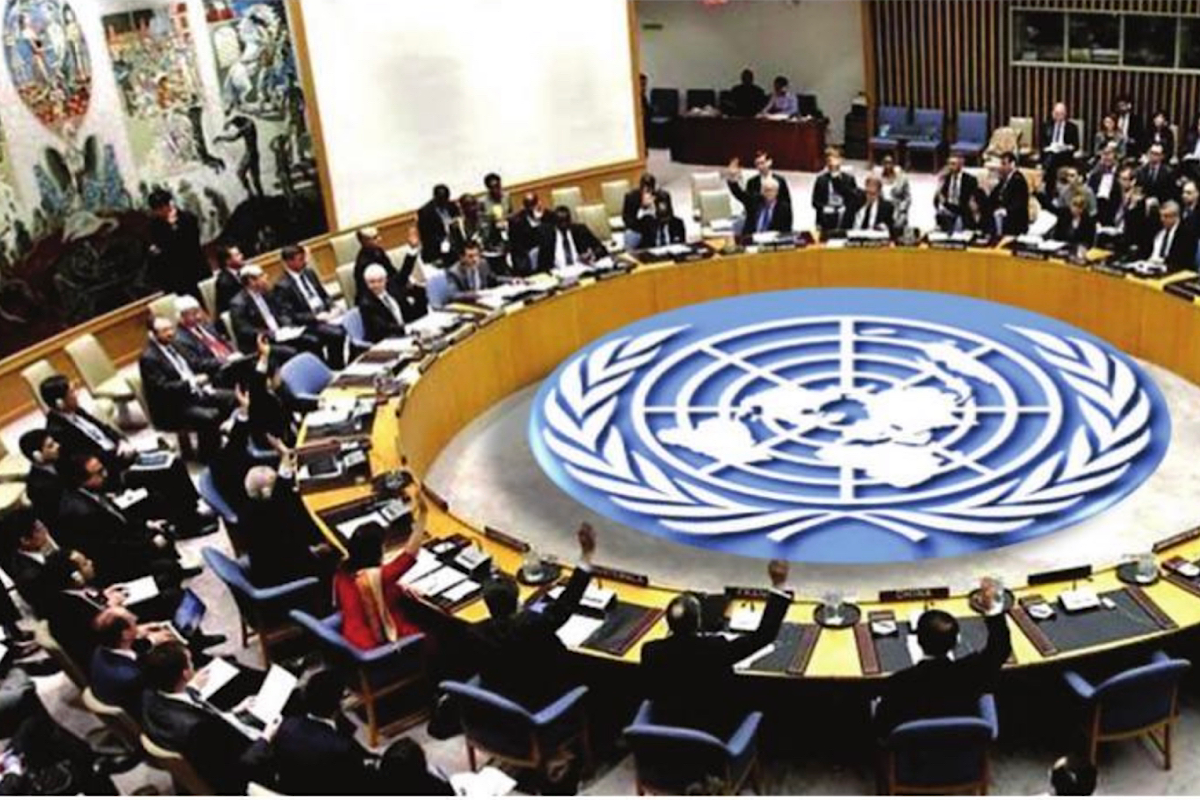Has the Security Council fulfilled its obligations and upheld the principles enriched in the world Constitution the UN Charter and the UDHR? The answer would obviously be a big ‘no’ because there have been more wars, armed conflicts and violence amongst the member States than they occurred in the century preceding the United Nations. According to Uppsala University, Sweden, there have been at least 285 armed conflicts in the world since 1946, out of which 23 conflicts have been devastating. The ten most devastating armed conflicts, wars or invasions engulfing the world have been:
1. The Korean War (1950- 1953: UN Command led by USA; fierce fighting for more than 3 years; Korea is divided ~ con- flict unresolved; casualties: 2-3 million.
Advertisement
2. The Vietnam War (1955- 1975): Also known as ‘Conflict in Vietnam, Laos and Cambodia’; US-led Cold War lasted for about 20 years; deaths: about 3 million Vietnamese, 310,000 Cambodians, 62,000 Laotians, and 58,220 US service personnel. According to Bertrand Russell, short of dropping atom bo- mbs, the US soldiers did every kind of inhuman torture, brutal- ities and genocide including using Napalm bombs on innocent men, women and children.
3. The Bosnian War (April 1992- December 1995): NATO led forces; conflict continued for 5 years: 101,000 dead.
4. The Second Congo War (1998-2003): Also known as the Great War of Africa or Africa’s World War, the deadliest war since WW II. Although a peace agreement (Sun City Agreement brokered by South Africa) was signed in 2002 and the war ended officially in 2003, violence has continued in many regions, especially in the East. Nine African nations and twenty five armed groups funded by ‘blood diamond’ are involved in the ongoing war. Casu- alties: 5.4 million deaths in war and disease, 3.4 million displaced, 2 million sought asylums, largescale destruction of forests and protected animals as more than a million people who fled to the forests lived on ‘bushmeat’. Critics have alleged that the UN had played a dubious role in the conflict.
5. The Afghan War (2001-2021): A sordid story of war, conspiracy and terrorism. US led
NATO invasion continued for 20 years ending with withdrawal of US forces in 2001.
Terrorist organization, Taliban has recaptured power but armed conflict is going on. The
State was in near continuous state of war since 1970s. Casualties: 1.4 ~2.5 million dead
and millions dis-placed.
6. The Second Gulf War (2003-2011): Also known as Iraq War started with the invasion by US-led NATO forces that overthrew the government of Saddam Hussain. The US was re-involved in 2014 but conflicts and violence are still continuing. Total casualties: 113,000 civilian deaths, Iraqi combatants – 71,000 dead, coalition forces ~ 25,000 dead and 117,000 wounded.
7. The War in Darfur (2003- present day): Nicknamed as the ‘Land Cruiser War’~ a major armed conflict in the Darfur region of Sudan involving ethnic cleansing and genocide, that began in 2003 and ended with the signing of a comprehensive peace agreement on 31 August 2020 between the Sudanese gov- ernment and the various rebel groups. Conflict is going on. Casualties: 300,000 killed (UN estimate)
8. The War with ISIL ( June 2014-present): This was a global war against the ISIL who rapidly gained large territories of Iraq and Syria and established the ‘Islamic State of Iraq, Syria and Levant’ with the objective of reviving the Caliphate. The ISISL and Al-Qaida operatives spread their tentacles to Iraq, Syria, Libya, Nigeria, Afghanistan, North Caucasus and South East Asia. In June 2014, a US-led coalition of 14 nations started air strikes followed by many other coalitions to fight the ISIL. ISIL military was defeated in Iraq and Syria but the fight is going on. Casualties: at least 28,000 civilians killed by ISIL; about 13,000 killed by coalition air- strikes; 7,600,000 civilians dis- placed in Syria and 3,300,000 displaced in Iraq.
9. The Syrian Conflict (March 2011-present day): The Syrian Civil War has been going on for more than 12 years be- tween Syrian President Basher alAssad and various domestic and for- eign forces who are opposed to his government. A cease fire since 6 March 2020 is still holding with spo- radic clashes. Ca- sualties: 470,000- 610,000 deaths.
10. The Rus- so-Ukraine War (2014-present day): This war which started with the annexation of Crimea in February 2014 by Russia turned into one of the deadliest. The conflict is going on for almost 10 years. Ukraine is sup- ported by the Western powers and there is no sign of the war ending. Casualties: estimates vary widely. One estimate puts Russian losses at 110,000 (US Intelligence source) and probably an equal number on the Ukrainian side. As of November 2022, Russia occupied 18 percent of Ukraine’s territory. While a number of nations had been burning and were being destroyed what was the Security Council doing? It must be admitted that the Security Council had always been pretty active (almost in continuous session for consultations both inside and outside the Chamber) but had been absolutely ineffective in taking effective and timely action in the major conflicts owing to the application of veto power by the permanent members. In conflicts where any of the big five was involved or had interest, the Security Council was unable to pass any resolution for military intervention.
The all-powerful Secretary General was powerless and had to be a helpless spectator on the goings on in the Council. The glaring example is the Ukraine war because of Russian veto, the Security Council could not make any military intervention. If public memory serves right, only two Secretary Generals Dag Hammarskjold of Sweden (who was killed in a plane crash in Africa conspiracy theory remains) and Kurt Waldheim of Austria ~ could make a difference by their own efforts to negotiate peace in the conflict zones defying the machinations of the Big Five.
Notwithstanding the veto syndrome and severe constr- aints, the Security Council could manage to pass as many as 2692 Resolutions (as of 14 July 2023). The question remains whether all these resolutions could be implemented.
As of May, 2022, as many as 263 important resolutions of the UNSC had been vetoed ~ 121 times by Russia, 82 times by USA, 29 times by United King- dom, 17 times by China and 16 times by France. This only shows that the major and most serious resolutions of the Secu- rity Council, which affected any of the permanent members, were summarily rejected or neg- atived.
Concerning flare-ups in 285 war zones (recorded since 1946), the Security Council could man- age to agree for military inter- vention and send peace-keep- ing missions only in 14 theatres of war ~ Korea, Congo, Cyprus, West New Guinea, Sinai Peninsula, Kuwait, Namibia, Cambo- dia, Bosnia and Herzegovina, Rwanda, Somalia, Sudan and DR Congo with limited suc- cess as many of the conflicts remain unresolved and peace is fractured by recurring resurfac- ing of violence.
No evaluation about the fate of about 7,000 resolutions passed so far by the Council is available but it can be presumed that since implementation by the member-countries is volun- tary, the majority of the resolutions might have remained unimplemented.
(The writer is a former Dy. Comptroller &Auditor General of India and a former Ombudsman of Reserve Bank of India. He is also a writer of several books and can be reached at brahmas@gmail.com)











